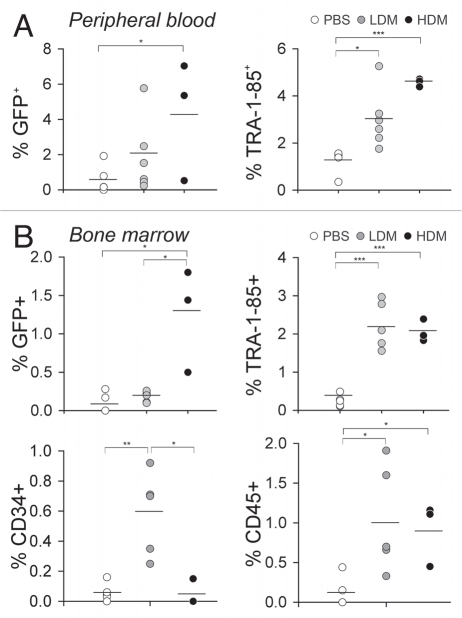Figure 2.
Persistence of hESC-derived hematopoietic cells in the peripheral blood and long-term engraftment in the bone marrow of recipient mice. After 10 days in co-culture with M2-10B4 stromal cells, DHFR-GFP+ hESC-derived hematopoietic cells were infused into DHFR-BMT mice (HDM group) or non-irradiated mice (LDM, PBS groups). One week after transplantation, mice were treated daily with PBS, 0.5 mg kg−1 MTX (LDM), or 2 mg kg−1 MTX (HDM) for 4 weeks. (A) GFP marking and human cell content (as detected by staining with TRA -1-85 antibody) in the peripheral blood was evaluated at 12 weeks post cell transplantation. Mean percentages for each group are shown (bars). (B) Long-term engraftment of hESC-derived hematopoietic cells in mouse BM. Animals were evaluated 12–16 weeks after DHFR-GFP hESC-derived hematopoietic cell transplantation and 8 weeks after withdrawal of MTX chemotherapy. Total GFP marking and engrafted cell phenotypes were evaluated by flow cytometry. Mean percentages are shown. Levels of statistical significance: *p < 0.05. **p < 0.005 and ***p < 0.0005. BMT, bone marrow transplanted; DHFR, dihydrofolate reductase; GFP, green fluorescent protein; HDM, high-dose methotrexate; LDM, low-dose methotrexate; MTX, methotrexate; PBS, phosphate-buffered saline.

